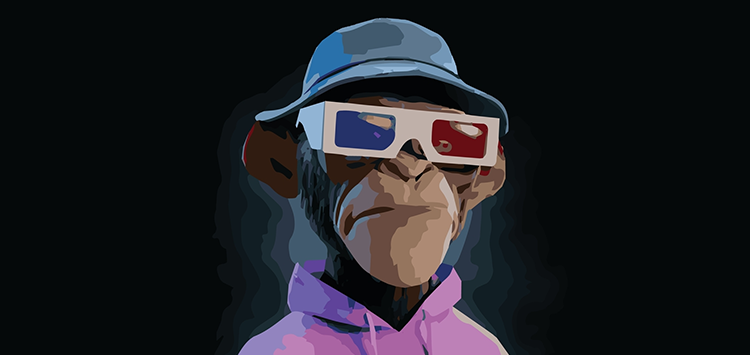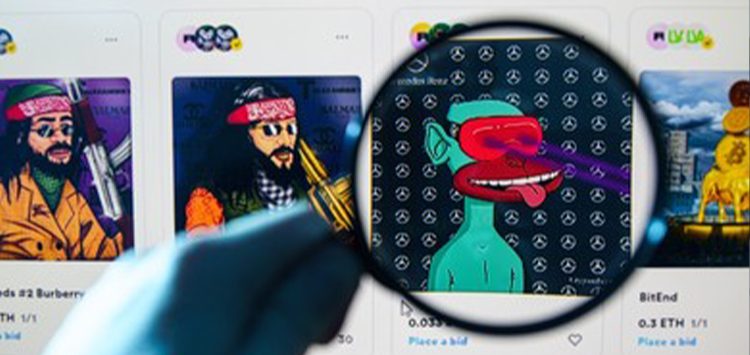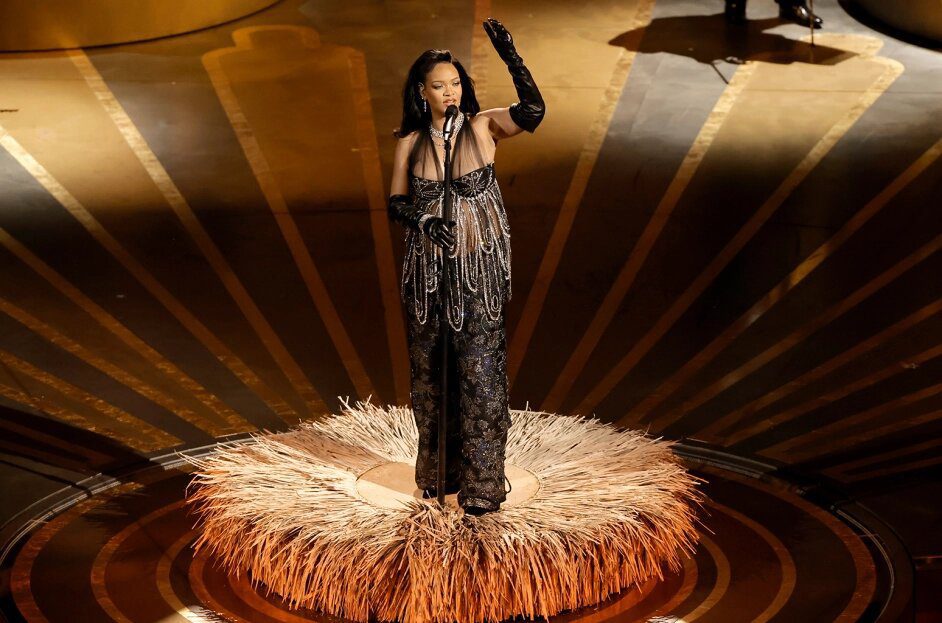Since 1700 BC, we have seen how investing has gone from focusing on the power of returns to now focusing more on the future value of the asset in question, which is termed value investments.
This covered an era when the Code of Hammurabi provided a legal framework for investment, establishing the means for the pledge of collateral by codifying debtor and creditor rights in regards to pledged land; to the medieval Islamic world, where the ‘qirad’ was a major financial instrument that represented the arrangement between one or more investors and an agent where the investors entrusted capital, to what many would call the modern-day traditional form of investing such as Bonds, Treasury Bills, Equities and so on.
Value investing involves buying assets believed to be undervalued to later sell at a higher price. This new idea brought a wave of other ways to invest, including investing in the art world. Now, art pieces don’t just exist for aesthetics.


What’s there to know?
According to Amy Bergen, a writer and editor for Money Under 30, “The art market has become one of the hottest new investment crazes in recent years. Painting and sculpture collectors frequently buy pieces with an eye towards adding to their investment portfolio.”
According to the Contemporary Art Market report for 2021, the market saw a recovery from the 34% downturn witnessed in its global turnover contract seen in 2019/2020, which Thierry Ehrmann, the CEO and founder of Artprice, attributed to, “the ‘panic’ of March 2020 and the complete stoppage of auctions.”
The report states that the art market is ‘back in full speed with unprecedented stats’, as $2.7 billion worth of contemporary works changed hands at auction over the 2020/21 period.
It further states it is:
An incredible figure considering the negative impact of the global health crisis. The recovery is all the more robust for being based on an unprecedented volume of transactions with more than 100,000 works sold by just over 34,600 artists.
The report pointed out that the figures are all new records. It also stated that this is the first time ever that the industry has exchanged over 100,000 Contemporary works in 12 months.
The art world recorded 102,000 transactions in 2021. The industry also saw an unsold rate of 30%, which is relatively down, despite the increase in the transactions offered during the period.
Although we saw the boom in the art world, Thierry mentioned something of note:
Photography and prints have been particularly successful in this new online environment and in 2021, we have seen the sensational arrival of completely dematerialised artworks, the famous NFTs.
Thierry Ehrmann
The advent of NFTs


As with the boom of fungible tokens in 2017, we saw the rise of the NFT space in 2021. NFTs, short for Non-Fungible Tokens, is the new name given to this new form of opportunity that the Distributed Ledger Technology (DLT), the backbone technology behind the cryptocurrency space, has created.
It is a non-interchangeable unit of data stored on a DLT, which can be sold and traded. NFT ledgers are believed to provide a public certificate of authenticity or proof of ownership, but the legal rights conveyed by an NFT can be uncertain.
NFTs allow for the tokenisation of anything from pictures, music and even tweets. They are any digital collectable that can be conceived to hold value based on one’s own volition.
However, NFTs do not restrict the sharing or copying of the underlying digital files, do not necessarily convey the copyright of the digital files, and do not prevent the creation of NFTs with identical associated files.
The term ‘non-fungible’ comes from the idea that each token is unique and cannot be exchanged for something exactly alike. This is what gives this industry its appeal because they function like cryptographic tokens.
Unlike cryptocurrencies like Bitcoin, NFTs are not mutually interchangeable. This means that while all bitcoins are equal, each NFT may represent a different underlying asset and may have a different value.
NFTs are created when Blockchains concatenate records containing cryptographic hashes, sets of characters that identify a set of data, onto previous records, creating a chain of identifiable data blocks. This cryptographic transaction process ensures the authentication of each digital file by providing a digital signature that tracks NFT ownership.
How NFTs fared in 2021
According to data from The Block’s “2022 Digital Asset Outlook,” the total Non-Fungible Token (NFT) trading volume ended the year 2021 with a total of $8.8 billion, with arts and collectables accounting for 59% of the volume while gaming NFTs accounted for 41% of the trading volume.
The Blocks highlighted some of the most significant events in the NFT space in 2021.
From Beeple’s NFT selling for $69 million to celebrities donning CryptoPunks and Bored Apes to PayPal buying a CryptoPunk to large art auction houses like Christie’s and Sotheby’s embracing NFTs, multitudes of events in 2021 brought NFTs into the zeitgeist.
The report revealed that the total monthly NFT marketplace volume increased 133 times from $17.9 million in January 2021 to $2.0 billion in November. It further reads,
From nonexistent in January to facilitating $2.3 billion worth of NFT trades, the rise of OpenSea as a marketplace has been staggering.


Ethereum remains the most dominant blockchain as far as secondary sales are considered. At $9.3 billion, it has almost three times the secondary market sales compared to Ronin Network, which is the second-best, with $3.2 billion.
However, the report stated that it is essential to note that these are all-time comparisons, and Ethereum has had a head start ahead of sidechains or other layer ones.
The NFT space received nearly $5 billion in private venture funding, making it the third-highest in the cryptocurrency sector across 406 deals. The average deal size was $14.9 million while the median deal size was $2.7 million.
The big question: Are they Worth Investing In?
It is true that the NFT space has grown and given some of its participants life-changing wealth. For example, Mike Winkelmann, the digital artist known as Beeple, sold an NFT, ‘EVERYDAYS: THE FIRST 5000 DAYS’ for $69.4 million at Christie’s, a world-leading art and luxury business, known for its live and online art auctions.
In October, Winkelmann sold his first series of NFTs, with a pair going for $66,666.66 each. In December, he sold a series of works for $3.5 million total. And in February 2021, one of the NFTs that originally sold for $66,666.66 was resold for $6.6 million. This exemplifies the phenomenal growth of the NFT space, especially in 2021.
We will recall how 22-year-old student, Sultan Gustaf Al Ghozali, who has been able to tap into the NFT frenzy, became a millionaire in the process. He listed selfies of himself as an NFT on the largest NFT marketplace, OpenSea and sold them for profit.
He has been able to convert and sell nearly 1,000 selfie images as NFTs. According to him, he took photos of himself for five years, between the ages of 18 and 22, as a way to look back on his graduation journey. He then later converted these selfies into NFTs and uploaded them to OpenSea in December 2021.
While the stories act as a form of encouragement, Olumide Adesina, an analyst at Quantum Economics, explains that NFTs should not be in an investment portfolio.
NFTs are not needed in most investment portfolios particularly for conservative and much older investors. In some respects, NFTs are pretty much new, untested and very risky, just as crypto assets are. In contrast to bitcoin and other popular altcoins, your NFT may not have a consistent market of buyers.
However, Olumide acknowledges the growth seen in the space.
“Despite this, NFTs have grown immensely popular, and some investors have made a lot of money from them. The answer to whether NFTs will hold the value of a Priceless work like Mona Lisa painting will only come with time,” Olumide says.
Dan Olson, the creator of the video essay “Line Goes Up – The Problem with NFTs,” explained that there are still some fundamental flaws in relationship to how NFTs are created.
He says, “while NFTs are supposed to be completely decentralised, in most cases there’s no cryptographic relationship between the image that NFT points to and its token. The image could be easily altered or replaced if people with access to servers changed the file names.”
Michael Every, Rabobank’s head of financial markets research for Asia-Pacific believes the space is in a bubble.
“This may well be the apotheosis, the peak in the paradigm of everything bubbles. It worries me intensely even if I fully understand the dynamic that drives younger people in particular.”
Humphrey Yang, personal finance expert behind HumphreyTalks compared the space to gambling.
It’s almost like a leveraged bet on crypto. It’s essentially gambling but people don’t really know the difference and they buy them because they’re fun.
Humphrey Yang
Besides the cons, The NFT has attracted a lot of artists and celebrities who have now become owners of a form of NFT.
The Bored Ape Yacht Club (BAYC) for example, is one of the biggest collections of 10,000 NFTs, with the likes of Eminem, Steph Curry, Jimmy Fallon, Mark Cuban, Paris Hilton and Justin Bieber owning at least one BAYC.
Because of this influx of A-listers owning the collection, Yang further explained, “Who doesn’t want to be associated with Stephen Curry, for example? In addition, if you own that NFT, you get to go to all the parties that they might have in real life. It’s like a membership pass, so the value really comes from other people assigning value to it.”
It’s more pros than cons
Experts have mentioned that the NFT space is not worth investing in, while others have said the space is an asset bubble waiting to pop. Added to that, we are seeing significant investment from venture capital today.
For example, Yuga Labs, the creators of the Bored Ape Yacht Club NFT collection and the new owners of the CryptoPunks and Meebits brands, has reportedly completed the raise of a $450 million funding round, putting its valuation at $4 billion. This is the first time the form is raising funds.
This points to a significant level of interest from the VCs and it shows that investments in the space are not stopping anytime soon.
So, if you plan to invest and have the funds, do your research and just do it.






